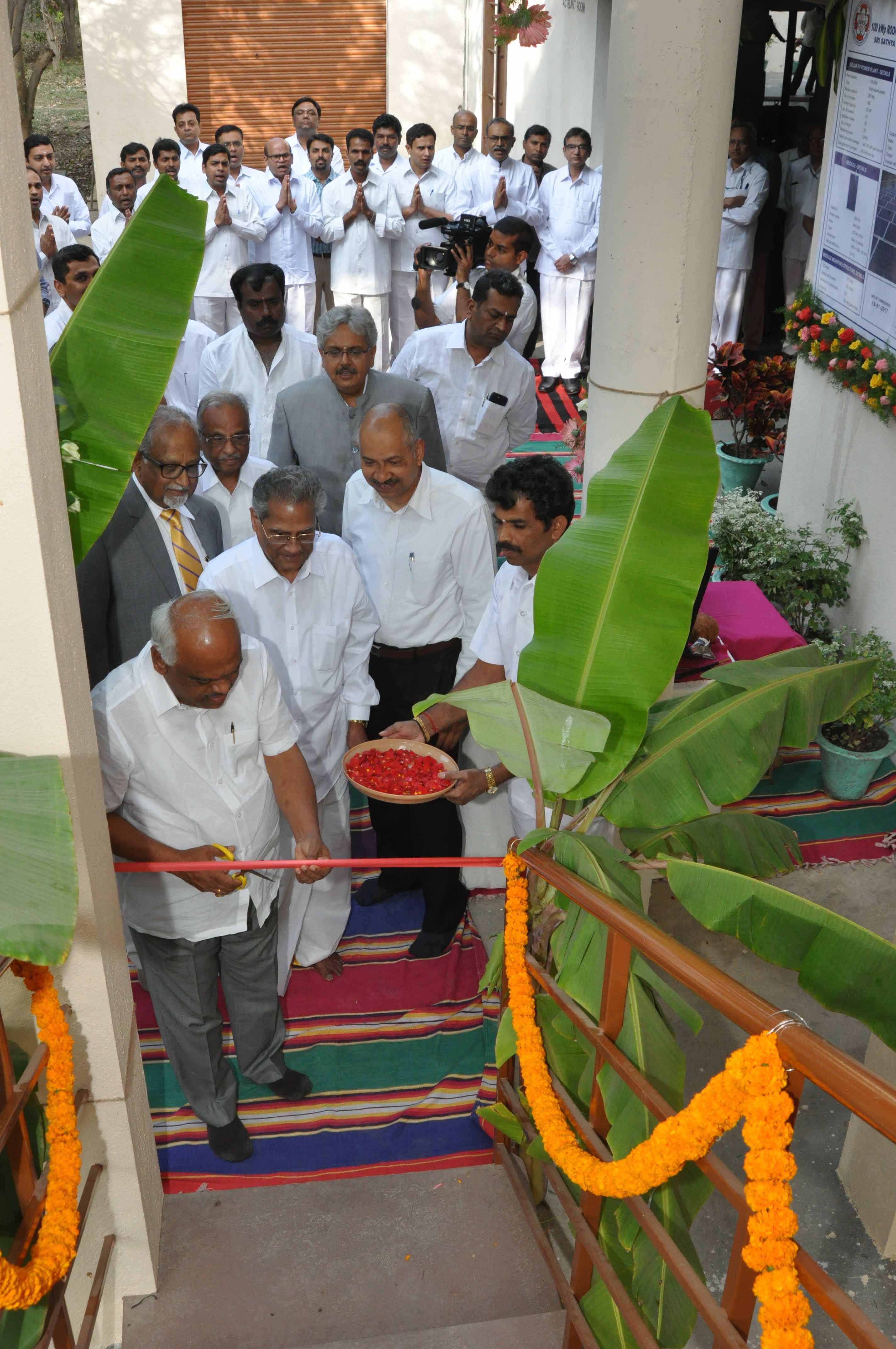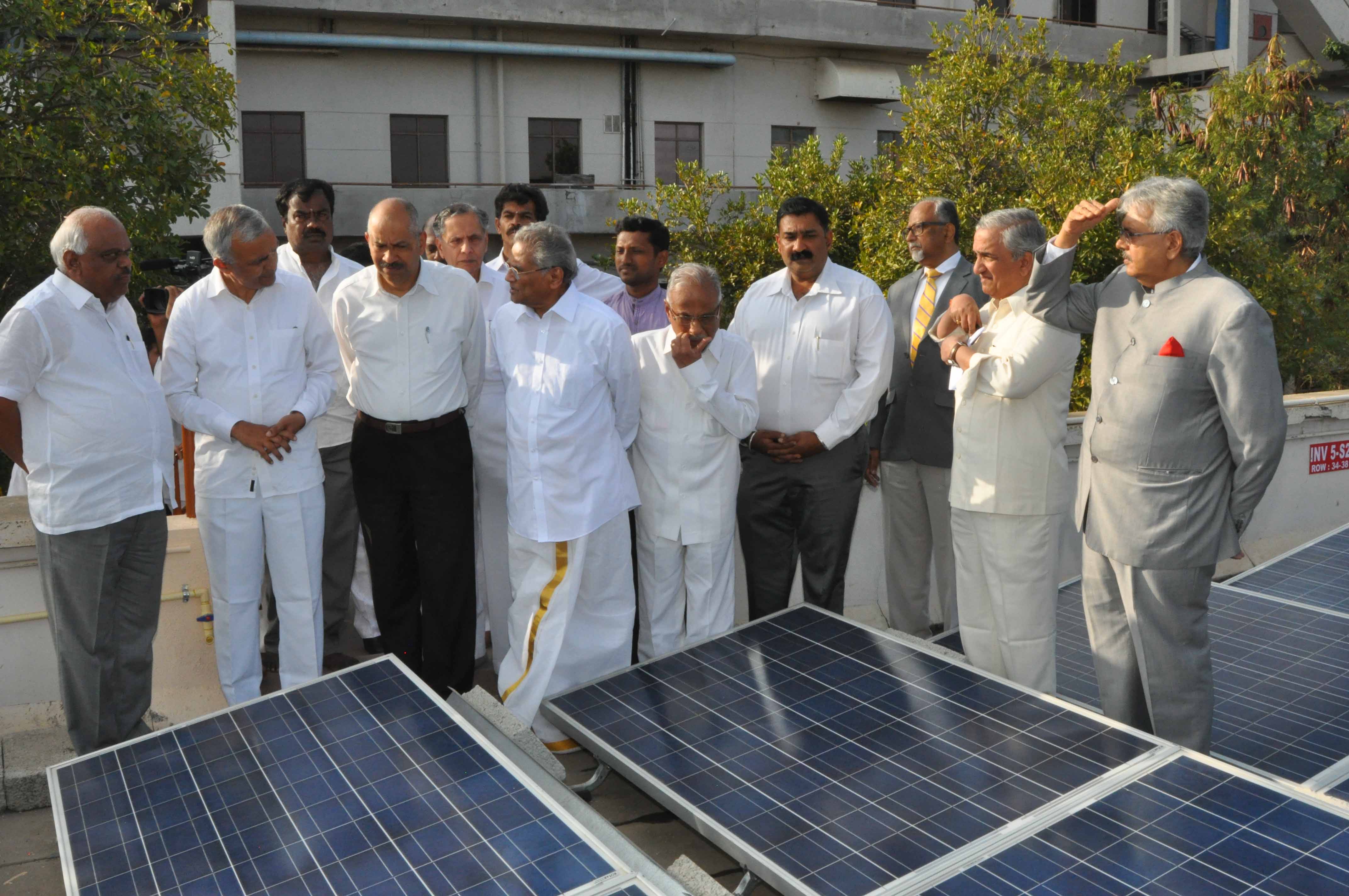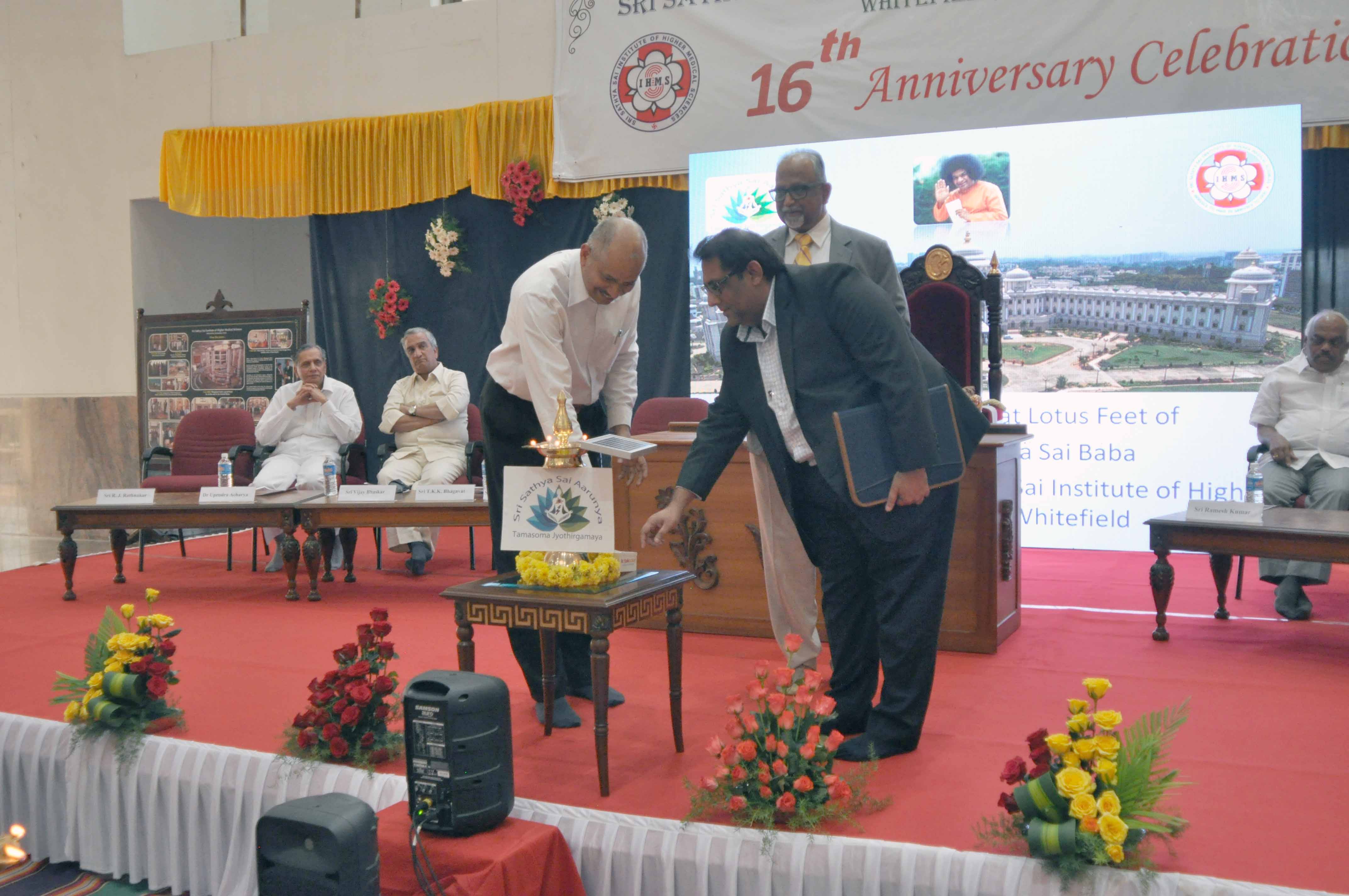Sri Sathya Sai Aarunya-100 KVA Solar Power plant
19-Jan-2017 stands out as a red-letter day in the annals of Sri Sathya Sai Institute of Higher Medical Sciences (SSSIHMS),
as on this day, the Institute, and the Sri Sathya Sai Central Trust (SSSCT), have taken their first a proud and responsible step forward towards investing in green energy by commissioning a 100 kWp roof-top, Grid-Integrated Solar Power Plant.
The Hon’ble Minister of Health, Govt. of Karnataka, Sri K.R. Ramesh Kumar, commissioned the plant on the occasion of the 16th Anniversary of the Institute. The Trustees of SSSCT, Dr. Sundaresh, Director, SSSIHMS- Whitefield & Dr. Upendra Acharya, MS, SSSGH-WFD and officials from Kotak Urja Pvt. Ltd., who supplied and installed the plant were also present.
The plant has been christened as “Sri Sathya Sai Aarunya”. Shri P. Ravi Kumar, I.A.S, Addl. Chief Secretary, Dept. of Energy, turned on the switch to turn on a traditional lamp in the dome area, lit by LEDs, and powered by solar power to symbolically commission the plant. He also appreciated the initiative of the Trust to reduce the green-house gas emission, and of going green by inaugurating the 100 kW solar plant on the occasion of the Institute’s 16th Anniversary.
This step makes SSSIHMS, Whitefield a completely free super-specialty hospital, the first free hospital in Bangalore, and perhaps the whole of Karnataka, to set up a pilot solar PV plant of this size. The participants inspected the facility and Dr. B. Raghavendra Prasad, Professor, Indian Institute of Astrophysics and a Consultant to the Trust for this project briefed them on the salient features of the plant.This is the first initiative by the Sri Sathya Sai Central Trust and represents their keenness in furthering the cause of green energy, and reducing one’s carbon foot-print. Basing on the experience with this plant, it is proposed to scale up the capacity of the plant at SSSIHMS-Whitefield and set up similar units in other institutions of the Trust.
The 100 kWp plant is made up of 400 nos. multi-crystalline solar photo-voltaic panels, each of 250 W capacity. The panels are inter-connected together in strings of 20 panels each. Each of the strings is connected to one inverter of 20 kW capacity. The output of the plant is connected to the hospital supply, through a bi-directional meter. The output is monitored remotely through the Internet.
Economics of Solar Power Plants
Dr. B. Raghavendra Prasad, Professor at the Indian Institute of Astrophysics, an alumnus of Sri Sathya Sai Institute of Higher Learning, and a person with significant experience in the area of solar PV power generation, conducted a feasibility study before the Trust invested in this project.
He proposed that, SSSIHMS-WFD could set up a 100 KWp (kilo-watt peak) roof-top solar power plant as a pilot project, which would generate up to 1.5 lakh units of energy per annum (5% of the hospital’s per annum requirement, and 30% of the subsidy shortfall). Considering the present rate of Rs.6.5 per kWH, and cost of Rs. 58 lakhs towards a 100 kWp power plant, the pay-back period for the investment would be 7 years on cost-to-cost basis & 9 years as per net-present- value (NPV).
To promote investment in this clean technology, there is a 15% subsidy on the value of the project, being offered by MNRE (Ministry of New & Renewable Energy).
There is adequate roof area available at SSSIHMS-WFD & ancillary buildings, almost to an extent of 1.5 lakh SFT (14,300 sq.m). Considering the nearness to the electrical infrastructure, it is proposed to install the solar PV system on the service block of the Hospital, with a terrace area of 15,000 sft, adequate to set up the 100 kWp solar PV power plant.
It was decided to go in for a grid-connected system under a net-metering scheme, wherein, we could technically sell excess power to BESCOM. Also, we would be registered with BESCOM, as an institutional generator of solar power. No power storage solution (batteries) was considered, as it is expected the power generated from the plant would be utilized immediately upon generation. Batteries would also mean higher initial costs and also replacement costs every 4-5 years.
Solar PV systems are known to be rugged, with no moving parts and requiring little maintenance. The sub-systems like the inverters are designed for long-life of 15 years and beyond. The only maintenance needed to improve power generation is to carry out periodic cleaning of the panels.




